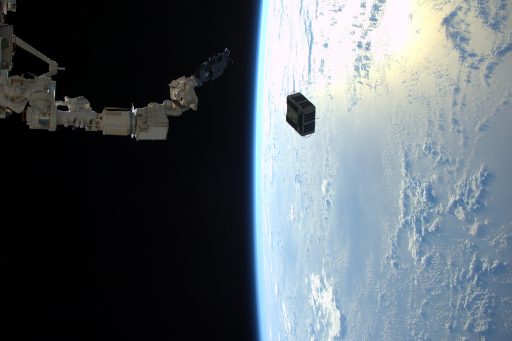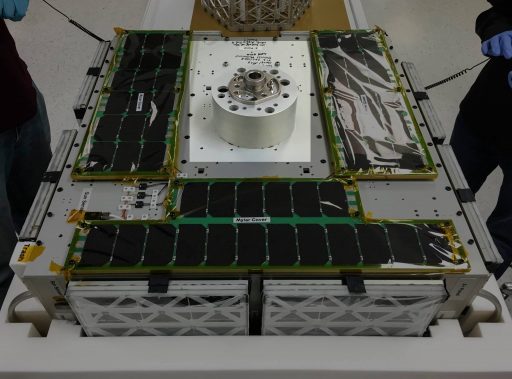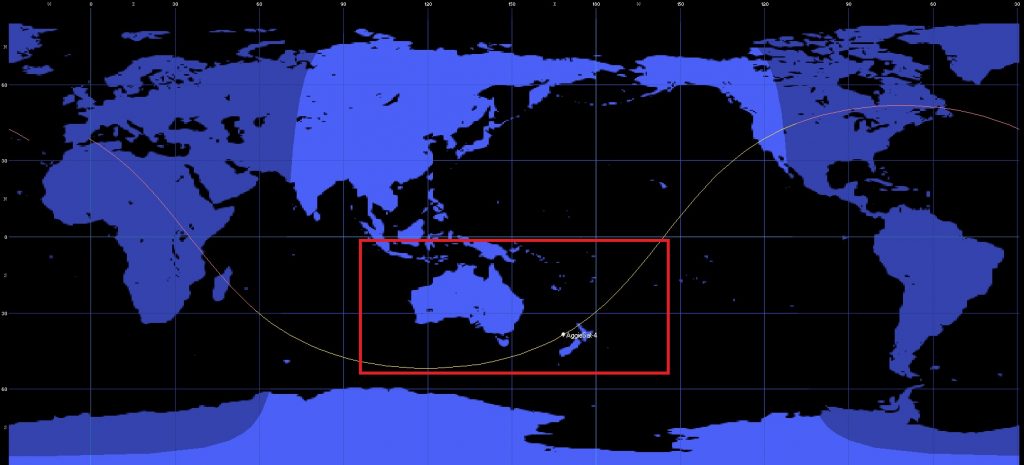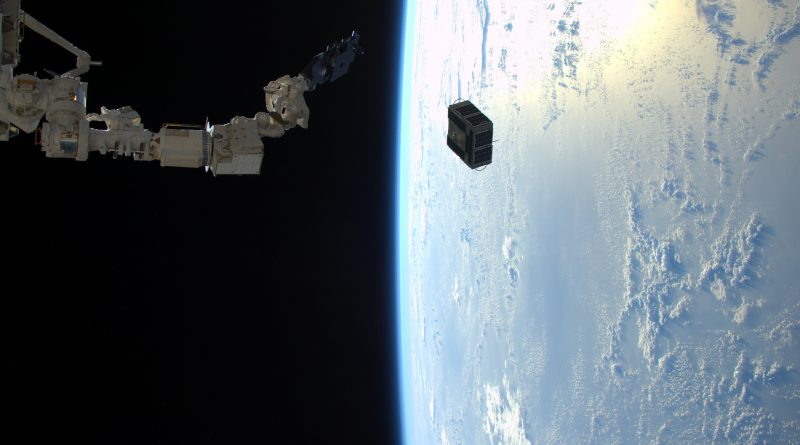Re-Entry: AggieSat-4

The 50-Kilogram AggieSat-4 technology demonstration satellite of Texas A&M re-entered the atmosphere on March 12, 2018 after spending over two years in orbit following its release from the International Space Station. The mission was part of the LONESTAR project – “Low Earth Orbiting Navigation Experiment for Spacecraft Testing Autonomous Rendezvous and Docking” – and planned to test out relative navigation and optical tracking with a small satellite released from the parent spacecraft.
NORAD ID: 41313
Object: AggieSat-4, Microsatellite
Mass: 50 kg
Origin: USA
Inclination: 51.6°
Launch: December 6, 2015
Launch Vehicle: Atlas V 401
Launch Site: SLC-41 Cape Canaveral Air Force Station
Launched aboard Cygnus OA-4 Cargo Spacecraft
Released from ISS: January 29, 2016 ~16 UTC
Re-Entry Prediction: March 12, 2018 – 01:33 UTC +/- 12 Minutes
Re-Entry Zone: Indian/Pacific Ocean

Satellite Description: The AggieSat4 satellite, developed and manufactured at Texas A&M University, has a mass of approximately 55 Kilograms and measures 75 x 75 x 35 centimeters in size. The satellite hosts body-mounted solar panels for power generation and is equipped with a three-axis attitude determination and control system with an actuation accuracy of two degrees, making use of reaction wheels and magnetic torquers. The Electrical Power System hosts two battery packs delivering an operational voltage of 34 V and a capacity of 95 Watt-hours.
AggieSat4 hosts two low-data-rate (LDR) radios, a high-data-rate (HDR) radio, a crosslink radio for short-range communication with the Bevo-2 satellite, and a DRAGON GPS Payload.
AggieSat4 will be tasked with completing a number of mission objectives: demonstrating three-axis stabilization, the collection of GPS data, recording video of the release of BEVO-2 with a 2MP camera, computing and crosslinking relative navigation data based on relative GPS measurements and tracking BEVO-2 based on these navigation solutions.
>>Article: Pair of Satellites ejected from ISS for In-Space Navigation Exercise
Re-Entry Zone


